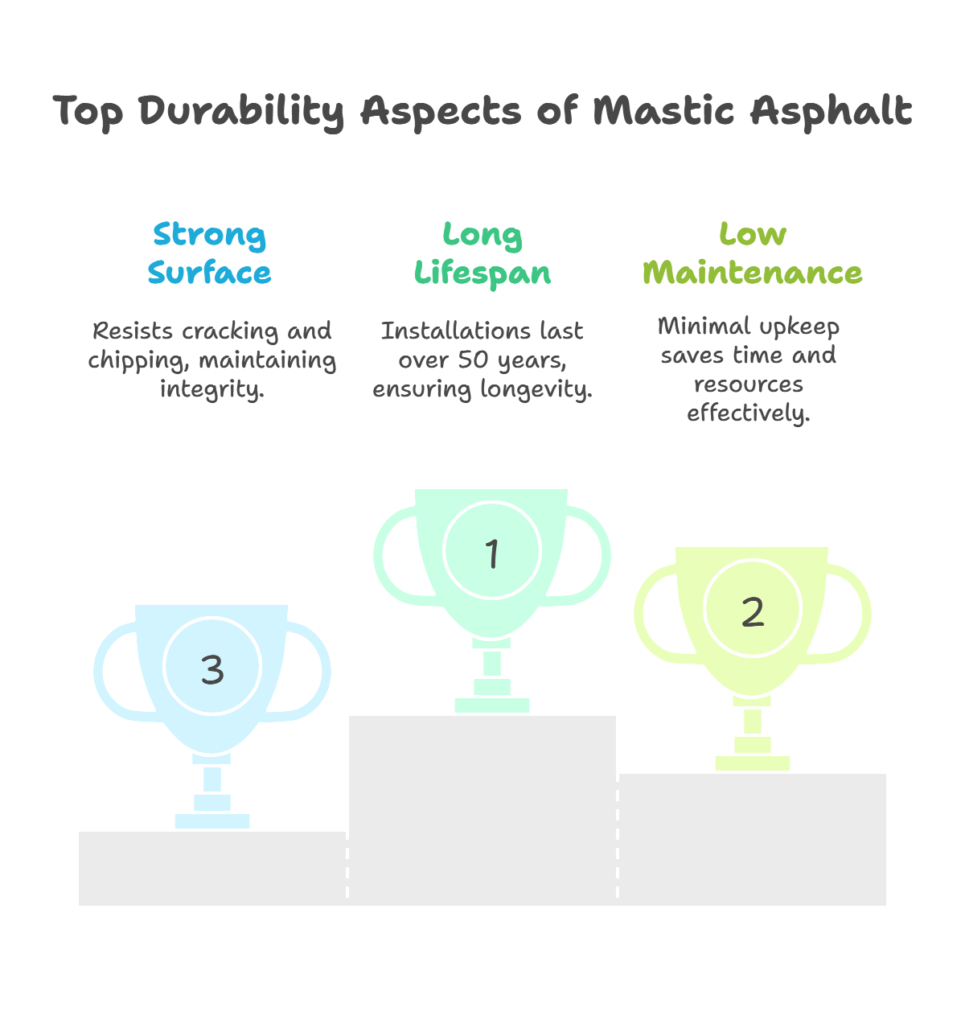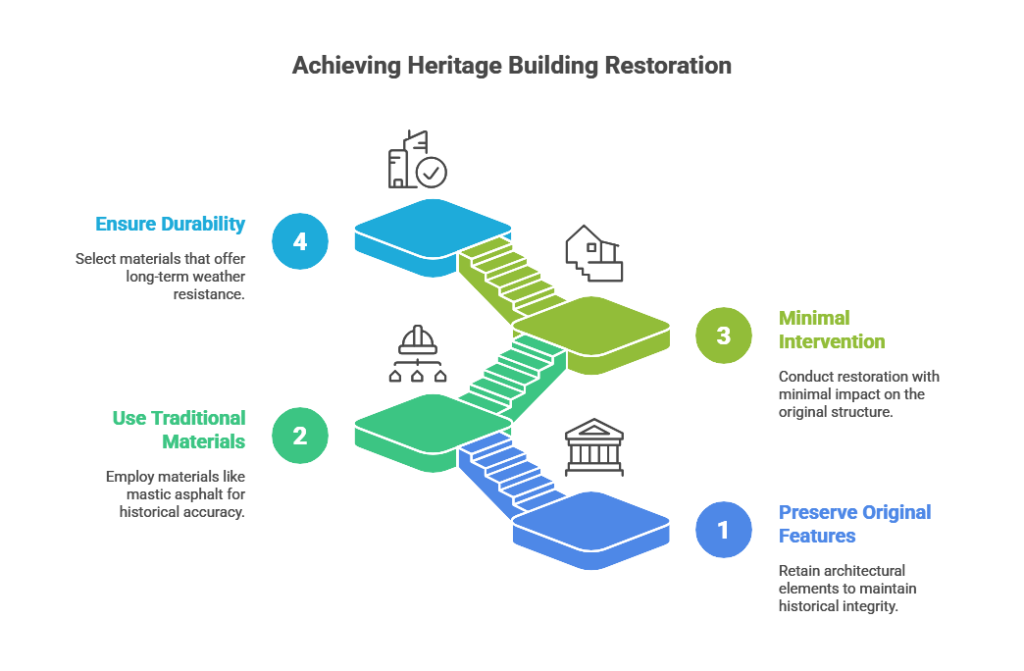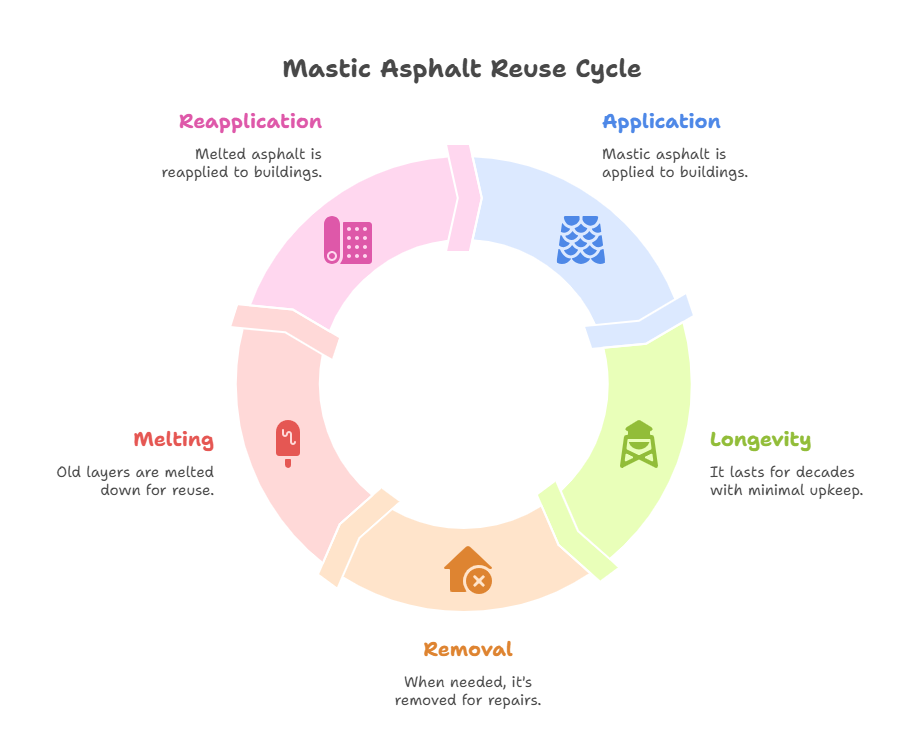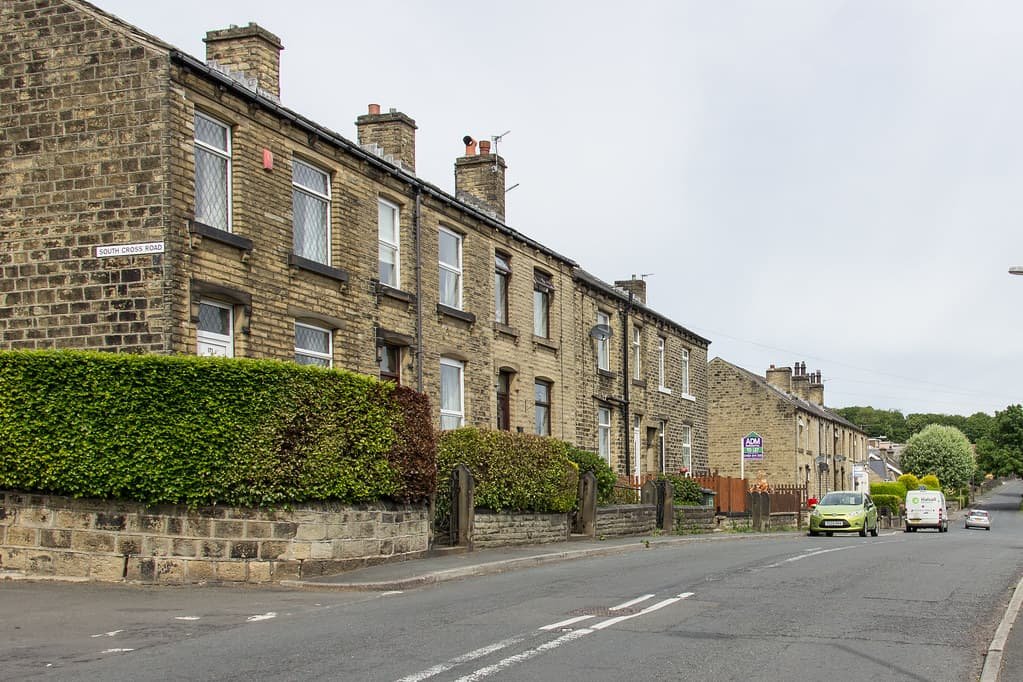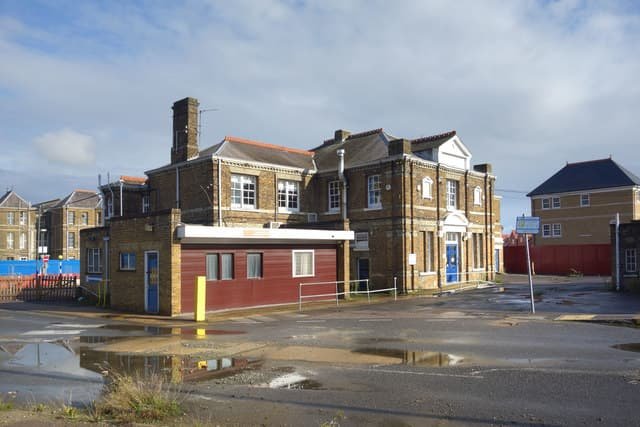
Contents
Our Services
Liquid waterproofing
What Client Say
I would just like to say a big thank you to the Denco team for the work they recently did on our roof, such a great finish. They repaired the old asphalt and covered it with a lovely new grey liquid coating. Leaving the premises very clean and tidy, we are so pleased with the end result. Thank you again guys.
Thank you to Lee and his colleagues from Denco Waterproofing for the outstanding job that they have completed on our balcony. Very impressed with there standard of workmanship and will definitely be having them back to replace the flat roof on our extension soon.
Great work by the Denco Waterproofing lads, very hard working, extremely tidy and the attention to detail was top class. Well done job all round. Many thanks.
Need help?
Don't hesitate to contact us
Send a message
Imagine walking through the charming streets of a historic UK town. The cobblestones under your feet and the beautifully aged buildings around you tell stories of the past.
These heritage buildings, with their timeless appeal, are not just relics; they are a vital part of our cultural identity. But have you ever wondered what keeps them standing strong through the years? You might be surprised to learn that mastic asphalt, a material that has been around for centuries, plays a crucial role in preserving these architectural treasures.
Why do these historic structures still rely on this age-old material? The answer is in the unique qualities of mastic asphalt. It offers durability, weather resistance, and flexibility that many modern materials lack. Mastic asphalt is a top choice for preserving heritage buildings. Understanding its benefits helps you see the skill involved in maintaining our history. Ready to uncover the secrets that keep these buildings as stunning as ever? Let’s delve into the fascinating reasons behind this enduring choice.
Historical Significance
Heritage buildings in the UK are rich with history. They stand as symbols of the past, telling stories of architecture and culture. Mastic asphalt is a key material used in preserving these structures. Its historical significance is profound. It has been part of building practices for centuries, ensuring longevity and durability. This material protects and respects the architecture of heritage sites.
Mastic asphalt has been a trusted material for generations. Its use dates back to ancient times, proving its reliability and strength. Builders have relied on it for roofing and flooring. It offers waterproofing that keeps buildings safe from the elements. This material has been part of many iconic UK buildings. Its legacy is intertwined with the country’s architectural heritage.
Preservation Of Architectural Integrity
Heritage buildings need materials that align with their original construction methods. Mastic asphalt fits perfectly. It has properties that complement traditional techniques. This ensures that restorations maintain historical accuracy. Buildings preserve their authentic look and feel. This is crucial for maintaining their historical value.
Durability And Longevity
Durability is key for heritage buildings. Mastic asphalt offers this in abundance. It withstands harsh weather, providing lasting protection. The material is known for its longevity. It requires minimal maintenance over time. This makes it an ideal choice for historic structures. It secures the building’s future while honouring its past.
Environmentally Friendly
Environmental considerations are important in restoration. Mastic asphalt is eco-friendly. It can be recycled and reused, reducing waste. This sustainable approach is beneficial for heritage buildings. It aligns with modern environmental standards. Preserving history does not mean ignoring the future.
Cost-effectiveness
| Factors | Benefits |
| Initial Cost | Affordable compared to other materials |
| Maintenance | Low maintenance requirements |
| Longevity | Long-lasting, reducing replacement costs |
Cost-effectiveness is crucial for heritage restoration. Mastic asphalt is affordable. It requires less maintenance over time. Its longevity ensures fewer replacements are needed. This makes it a smart investment for preserving historic buildings.
Properties Of Mastic Asphalt
Heritage buildings hold a special place in the architectural history of the UK. These structures not only embody cultural significance but also need careful preservation. One material that stands out in maintaining these buildings is mastic asphalt. Its unique properties make it a preferred choice for restoration and conservation. Mastic asphalt is still used in heritage buildings across the UK. Understanding its properties explains this choice. Let’s explore the key properties: durability, weather resistance, and flexibility.
Durability
Mastic asphalt is renowned for its exceptional durability. This material can last for decades without showing significant wear, which is crucial for heritage buildings. It withstands heavy foot traffic and resists damage from external elements.
Key aspects of its durability include:
- Long lifespan: Many installations last over 50 years.
- Low maintenance: Requires minimal upkeep, saving time and resources.
- Strong surface: Resists cracking and chipping, maintaining structural integrity.
Weather Resistance
The UK weather can be unpredictable, with heavy rains and harsh winters. Mastic asphalt offers excellent weather resistance, making it ideal for heritage buildings. It protects structures from moisture and temperature fluctuations, preserving their historical value.
Why mastic asphalt excels in weather resistance:
- Waterproof: Prevents water infiltration, safeguarding interior spaces.
- Heat resistant: Withstands temperature extremes without losing effectiveness.
- UV protection: Guards against sun damage, maintaining appearance.
Flexibility
Flexibility is a critical property of mastic asphalt, allowing it to adapt to structural movements. This flexibility ensures that heritage buildings remain intact and undamaged through shifting and settling over time.
Benefits of mastic asphalt’s flexibility include:
- Adapts to movement: Accommodates structural shifts without cracking.
- Versatile application: Suitable for various surfaces and angles.
- Seamless finish: Provides smooth, continuous coverage.
Aesthetic Appeal
The aesthetic appeal of heritage buildings in the UK is undeniable. These structures tell stories of the past and reflect the beauty of bygone eras. One key element that enhances this beauty is the use of mastic asphalt. It’s not just about durability or functionality. The aesthetic value it adds is immense. Mastic asphalt helps maintain the original look and feel of these historic sites. It ensures they remain true to their roots. This is crucial in preserving the charm and authenticity of these architectural gems.
Seamless Finish
Mastic asphalt is renowned for its seamless finish. This is particularly important for heritage buildings. A seamless finish means no visible joints or breaks. This results in a smooth and continuous surface. The benefits of this seamlessness include:
- Visual Cohesion: The lack of visible seams creates a clean, uniform look.
- Waterproofing: A seamless surface is more resistant to water penetration.
- Minimal Maintenance: Without joints, there’s less risk of damage or wear.
The seamless finish also complements the intricate designs often found in heritage architecture. These buildings often feature detailed carvings and ornate structures. Mastic asphalt blends effortlessly with these features. It does not distract or detract from the building’s original design.
Consider this: A heritage building’s roof treated with mastic asphalt. The surface remains smooth, with no interruptions. This enhances both the aesthetic and structural integrity. This is why many heritage conservationists prefer it.
Compatibility With Heritage Style
Maintaining the original style of heritage buildings is crucial. Mastic asphalt is compatible with various architectural styles. From Victorian to Edwardian, it adapts seamlessly. This adaptability is key in preserving the building’s historical essence.
Here’s how mastic asphalt aligns with heritage styles:
| Heritage Style | Features | Compatibility |
| Victorian | Ornate, decorative | Seamless finish enhances intricate details |
| Edwardian | Simpler, elegant lines | Blends with clean, elegant surfaces |
The use of mastic asphalt ensures that the visual integrity of these styles is preserved. It doesn’t interfere with the aesthetic elements. Instead, it enhances them. The material’s versatility allows it to match the original colour and texture. This is essential for conservation projects.
Mastic asphalt keeps heritage styles compatible. This helps preserve the building’s story. It’s a modern solution that respects the past. This balance is vital in the conservation and appreciation of heritage architecture.
Regulatory Standards
Mastic asphalt remains a popular choice for heritage buildings in the UK. One of the key reasons is its compliance with regulatory standards. These standards help keep construction and restoration materials safe. They also protect the historical integrity of these structures. Knowing these standards is key. They help keep the unique charm of heritage buildings and ensure they last.
Building Conservation Guidelines
Guidelines for building conservation play a vital role in the restoration of heritage buildings. The UK has specific regulations to ensure that the historical significance of these structures is preserved. Key points in these guidelines include:
- Preservation of Original Features: Original architectural elements must be retained where possible.
- Use of Traditional Materials: Materials like mastic asphalt that align with historical construction methods are preferred.
- Minimal Intervention: Any restoration work should aim to interfere as little as possible with the original structure.
These guidelines ensure that every restoration project respects the building’s history. They also promote the use of materials that offer durability and weather resistance. In this context, mastic asphalt is ideal due to its proven track record in heritage projects.
Material Specifications
Material specifications are crucial in choosing the right products for heritage buildings. Mastic asphalt meets several important criteria:
- Durability: It can withstand harsh weather conditions, ensuring longevity.
- Waterproofing: Provides excellent protection against moisture ingress.
- Compatibility: Blends well with traditional building materials.
These specifications ensure that mastic asphalt is not only effective but also complementary to the building’s original materials. Its ability to provide a seamless finish is particularly valued in heritage conservation. Furthermore, mastic asphalt’s low maintenance needs make it an economical choice for long-term preservation.
In summary, mastic asphalt aligns well with both regulatory standards and the specific needs of heritage buildings. Its use helps maintain the historical integrity of these structures while providing modern performance benefits.
Sustainability Aspects
Heritage buildings in the UK tell stories from the past. They showcase stunning architecture. They face modern challenges but still use mastic asphalt. Why? It’s largely due to its sustainability aspects. This material combines durability with eco-friendliness. It plays a key role in preserving history while caring for the planet.
Reusability
Mastic asphalt shines in its reusability. This is a major reason it remains popular in heritage building maintenance. Once applied, it lasts for decades. When repairs are needed, it can be removed and reused. This cuts waste significantly. Old layers are melted down and reapplied, saving resources.
Consider these points:
- Durability: Lasts 50-60 years with minimal maintenance.
- Recycling: 100% of the material can be reused.
- Cost Efficiency: Reuse reduces the need for new materials.
Reusability aligns with sustainability goals. It means less waste in landfills and fewer raw materials extracted. This approach supports a circular economy. By reusing mastic asphalt, heritage buildings maintain their historical integrity. They also contribute to a greener future.
Low Environmental Impact
Mastic asphalt boasts a low environmental impact. Its production emits fewer pollutants compared to alternative materials. This makes it a greener choice for heritage buildings.
Here’s why it stands out:
- Low Carbon Footprint: Manufacturing involves lower energy consumption.
- Non-Toxic: Free from harmful chemicals, safe for the environment.
- Minimal Waste: Almost zero waste in application and removal.
Additionally, its longevity reduces the frequency of repairs. This means fewer resources are used over time. The production process itself is energy-efficient. It adheres to strict environmental standards. This ensures minimal impact on natural surroundings.
By choosing mastic asphalt, heritage buildings in the UK support environmental preservation. They help in reducing carbon emissions. This choice reflects a commitment to sustainable construction practices. It balances the need for preservation with ecological responsibility.
Installation Techniques
Heritage buildings in the UK are special. They have charm and historical value. So, preserving them is important. Mastic asphalt is an old material, but it’s still the top choice for maintaining these structures. Its durability and waterproofing capabilities make it ideal for roofs, floors, and pavements. Installation techniques play a vital role in ensuring the effectiveness of mastic asphalt. These techniques have evolved over time, blending traditional methods with modern innovations. Understanding these approaches helps in appreciating why mastic asphalt remains relevant today.
Traditional Methods
Traditionally, installing mastic asphalt involved methods that have stood the test of time. These techniques were passed down through generations, ensuring the material’s effectiveness and longevity. Here are some key aspects of traditional installation methods:
- Hand Application: Skilled craftsmen manually apply the asphalt using wooden floats. This ensures a smooth and even surface.
- Heat Application: The asphalt is heated in large cauldrons to achieve the right consistency. It is then poured and spread uniformly.
- Layering Technique: Multiple layers are applied for added strength. Each layer is allowed to cool before the next is applied.
Traditional methods emphasise the skill and precision of craftsmen. This artistry ensures the asphalt’s durability and contributes to the building’s historical integrity. The process often involves a meticulous approach, requiring patience and attention to detail.
Below is a table summarising key traditional techniques:
| Technique | Description |
| Hand Application | Manual spreading using wooden floats |
| Heat Application | Heating in cauldrons to the desired consistency |
| Layering Technique | Multiple layers for added strength |
Modern Innovations
While traditional methods are cherished, modern innovations have introduced enhancements that make mastic asphalt installation more efficient. These advancements ensure quicker application while maintaining quality:
- Mechanical Spreaders: These tools distribute asphalt evenly, reducing manual labour.
- Temperature Control Systems: Advanced heating systems offer precise temperature control. This ensures optimal consistency during application.
- Improved Materials: New additives enhance the asphalt’s properties. This includes increased flexibility and resistance to weather conditions.
Modern innovations have streamlined the installation process. This makes it easier and faster without compromising the material’s quality. These techniques also reduce the risk of human error, ensuring a perfect finish every time.
While modern methods prioritise efficiency, they still respect the traditional essence of mastic asphalt. This blend of old and new ensures heritage buildings continue to stand strong against the elements.
Case Studies
Heritage buildings in the UK showcase the nation’s rich history and architectural skill. To preserve these structures, we need materials that endure time and weather. Mastic asphalt is one such material. It’s known for its durability and waterproofing. Many heritage sites still use mastic asphalt for restoration. This helps keep these iconic buildings intact for future generations. Key heritage site case studies reveal that mastic asphalt effectively preserves historical integrity.
Prominent Heritage Sites
Several well-known heritage sites in the UK have utilised mastic asphalt for restoration and maintenance. These sites demonstrate the material’s capability to preserve the structural and aesthetic qualities of historic buildings.
- Westminster Abbey: Known for its Gothic architecture, the Abbey required a roofing solution that would protect against water ingress without altering its historic appearance. Mastic asphalt provided an effective waterproof barrier.
- St. Paul’s Cathedral: This iconic London landmark chose mastic asphalt to repair its roof, ensuring the cathedral’s longevity while maintaining its historical significance.
- Hampton Court Palace: The use of mastic asphalt in this Tudor palace’s restoration helped preserve its grandeur, protecting against moisture and wear.
These sites showcase the reliability of mastic asphalt in safeguarding historical structures. Its adaptability to various architectural styles makes it a preferred choice for heritage conservation.
Successful Restoration Projects
Restoration projects employing mastic asphalt highlight its practical benefits and ease of application. These projects underline the material’s ability to address specific restoration challenges.
The following table illustrates successful projects where mastic asphalt played a crucial role:
| Project Name | Challenges | Solutions Provided by Mastic Asphalt |
| York Minster | Severe weather damage | Waterproof coating to prevent further damage |
| Edinburgh Castle | Historic stone preservation | Non-invasive application maintaining stone integrity |
| Tower of London | Structural wear from age | Durable surface reduces future repairs |
These projects demonstrate mastic asphalt’s versatility and effectiveness in restoration. Its ability to provide solutions to common challenges faced by heritage buildings ensures that these historic treasures are preserved for future generations.
Future Trends
Heritage buildings in the UK have used mastic asphalt for years. This classic material is strong and looks great with historical buildings. Looking ahead, trends in mastic asphalt show a mix of innovation and regulation. These trends will help make sure this material protects the UK’s rich heritage well.
innovative Materials
The future of mastic asphalt in heritage buildings is not static. New materials are emerging that enhance its properties. These innovations aim to improve durability, sustainability, and cost-effectiveness, making mastic asphalt a more versatile choice for preservation projects.
Some exciting developments include:
- Eco-friendly additives: These additives reduce the environmental impact of asphalt production.
- Recycled materials: Using recycled asphalt can lower costs and conserve resources.
- Improved polymers: These enhance the waterproofing and flexibility of asphalt.
Such innovations not only maintain the aesthetic appeal of heritage buildings but also ensure their longevity. By integrating these new materials, the industry can offer sustainable solutions without compromising on quality. A balance between tradition and innovation is key in preserving the past while catering to the demands of the future.
Changing Regulations
Regulations surrounding construction and restoration are constantly evolving. These changes affect how mastic asphalt is used in heritage buildings. New rules often emphasise sustainability, safety, and energy efficiency.
Key regulatory trends include:
| Regulation Aspect | Impact on Mastic Asphalt |
| Environmental Standards | Encourages the use of low-emission materials |
| Safety Requirements | Demands better fire-resistant properties |
| Energy Efficiency | Promotes reflective surfaces to reduce heat absorption |
These regulations push for advancements in mastic asphalt that meet modern standards. As a result, manufacturers invest in research to produce asphalt that aligns with these guidelines. This ensures that heritage buildings remain compliant while retaining their historical essence.
Reach out to our team for support or inquiries about why Heritage Buildings Still Use Mastic Asphalt in the UK
Heritage buildings need strong protection. Mastic asphalt waterproofing is durable, fully waterproof, and perfect for heritage preservation in the UK. It protects against damp and harsh weather while keeping the beauty of historic sites.
At Denco Liquid Waterproofing, we specialise in mastic asphalt preservation for listed buildings and heritage homes.
📞 Call us today for a free inspection.
Protect history with experts you can trust.
All You Need to Know
What Are The Disadvantages Of Mastic Asphalt?
Mastic asphalt can be costly due to the material and labour. It requires skilled installation to avoid imperfections. Its application emits fumes, impacting air quality. Repairing mastic asphalt is challenging and time-consuming. It can become slippery in wet conditions, posing safety risks.
What Is The Life Expectancy Of Mastic Asphalt?
Mastic asphalt typically lasts 50 to 70 years with proper maintenance. Its durability makes it ideal for roofing and flooring. Regular inspections and timely repairs can extend its lifespan. This sustainable material withstands weather elements, ensuring long-term performance.
What Are The Advantages Of Mastic Asphalt?
Mastic asphalt offers durability and waterproofing. It resists weather and chemical damage, ensuring longevity. Its smooth finish enhances aesthetics and reduces noise. Easy maintenance and fast installation save time and costs. Ideal for roofing, flooring, and paving.
What Is The Problem With Stone Mastic Asphalt?
Stone mastic asphalt can suffer from issues like poor compaction and drainage problems. It may lead to premature cracking and surface defects. Proper mix design and quality control are crucial to avoid these issues. Durability and performance can vary based on materials and construction practices.

